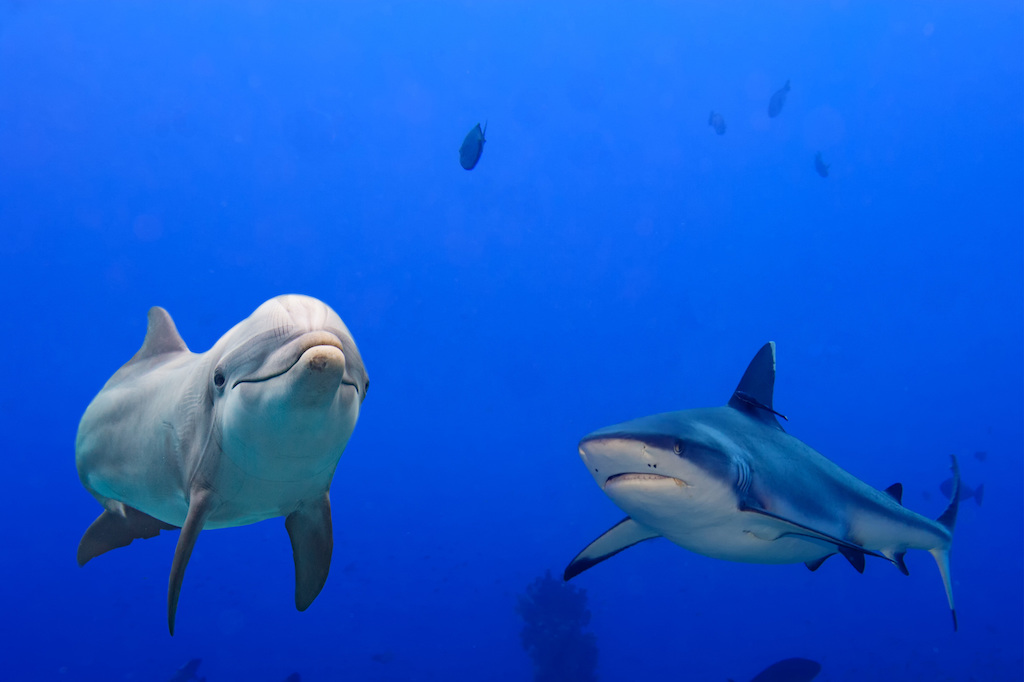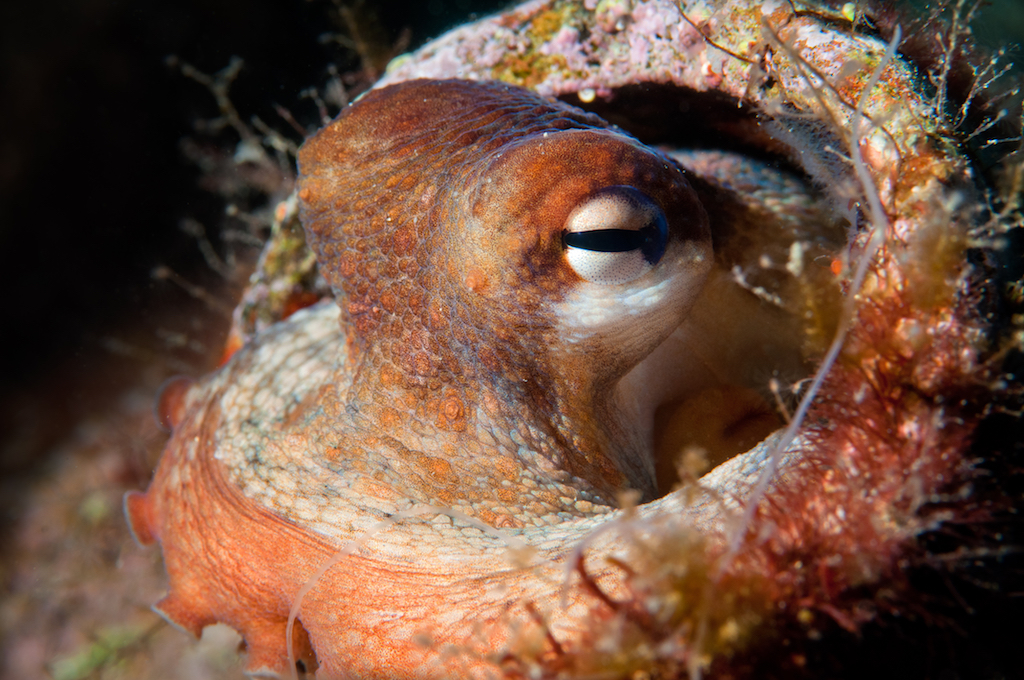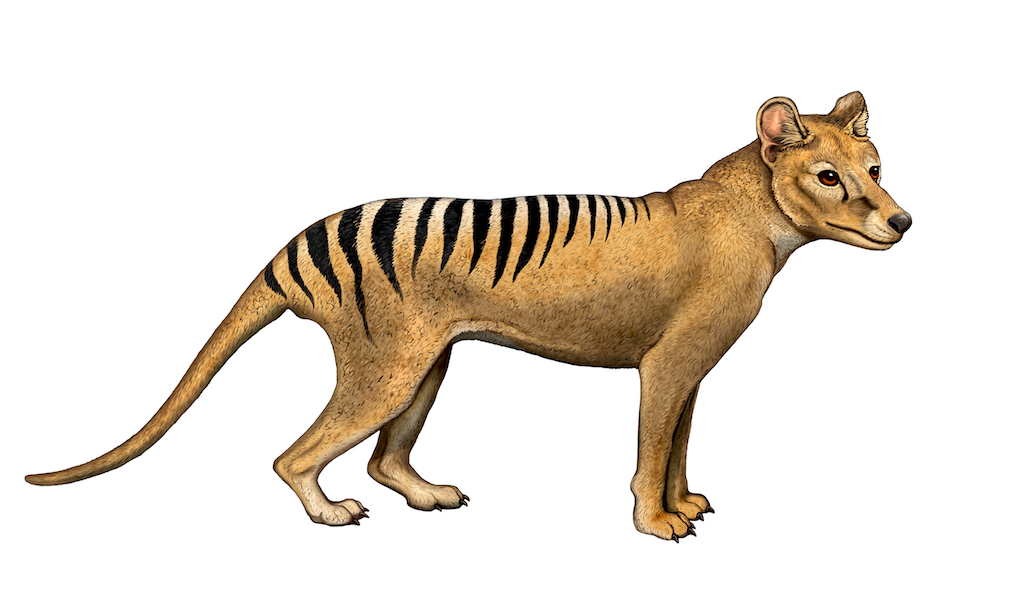What Is Convergent Evolution?
Reference Article: A brief overview of convergent evolution.

Convergent evolution is when different organisms independently evolve similar traits.
For example, sharks and dolphins look relatively similar despite being entirely unrelated. Sharks are egg-laying fish with the deadly ability to sniff out blood in the water, while dolphins are curious mammals that navigate by making clicking sounds and listening for their echoes. Those differences aren't too surprising, considering that the duo's last common ancestor swam the seas some 290 million years ago.
From that ancient common ancestor, one lineage struck out on land and evolved into mammals, including the wolf-like Pakicetus, which would later return to the water and evolve into whales and dolphins. Another lineage stayed put in the ocean, undergoing tweaks to become the modern shark. Yet despite their winding paths, both animals ended up in similar evolutionary niches: streamlined swimmers with smooth skin and water-slicing fins ideal for chasing down prey.
Each of Earth's habitats presents its own challenges. Sometimes, different species develop the same solution to the same problem. Biologists call this process — when two organisms share characteristics that they didn't jointly inherit from a common ancestor — convergent evolution.
Convergent vs. divergent evolution
The classical examples of evolution, such as Darwin's finches, demonstrate the opposite process: divergent evolution. Popularized in the late 1800s by American missionary and naturalist J. T. Gulick, the term describes one single species becoming many to fit different roles in a given setting. Among the Galápagos finches, for instance, beak shape changed (or diverged) to better match the different types of food available on various islands.
By contrast, convergent evolution happens when species start out distinct and then grow more similar. For instance, imagine you were to dump an assortment of parrots and toucans onto the same island. Individuals with beaks that were inefficient for snagging bugs might go hungry and die without passing their bad-beak genes on to offspring. But the parrots and toucans lucky enough to have beaks that were more successful at grabbing bugs, would survive and pass on the genes for those bug-nabbing beaks. Generations later, the descendents of both species could converge on the same beak shape, as it's the most successful design for surviving in that habitat.
The concepts underlying convergent evolution can be traced back to Richard Owen, a British biologist who, despite doubting Darwin's theory of evolution, in the mid 1800s pointed out the difference between animals with body parts that are built similarly (homologues) and body parts that just have similar purposes (analogues). A dolphin's fin and a human hand, for instance, are homologous because they have the same bone structure, despite their functions diverging since our last common ancestor. On the other hand, the dolphin's fin is an analogue of the shark's fin — they have the same purpose but different shapes because they evolved independently (and convergently).
Get the world’s most fascinating discoveries delivered straight to your inbox.
Examples of convergent evolution
Examples of convergent evolution abound, but they're easiest to see in familiar animal species. For example, giant pandas have body parts resembling thumbs, which the animals use to grip bamboo, as biologist Stephen Jay Gould described in Incorporating Nature Magazine in the 1970s. Both humans and octopuses have camera-like eyes with an iris, a lens and a retina — all essential parts of an imaging device. And both bats and birds have wings.
As similar as these traits may appear, a closer look reveals their independent origins. A panda paw, with its five digits and a thumb-like, stumpy bone jutting from its palm, looks nothing like a human hand. That makes sense, given that primates evolved their opposable thumbs about 50 million years ago while pandas did it less than 20 million years ago (and our last common ancestor lived 65 million to 90 million years ago). Similarly, the unique wiring of octopus eyes means they lack blind spots. And whereas bird wings are more akin to "arms," bat wings look more like "hands" with spindly fingers. To use Owen's categories, these are analogous, not homologous, body parts.
The driver of convergent evolution is the availability of specific roles offered by the environment. Oceans cast swift-swimming predators, be they sharks or dolphins. The skies need fliers, and creatures that live in or deal extensively with trees need to be able to grab branches with a tail, hands or claws.
One of the most dramatic modern-day examples is two whole convergent groups of animals: Australia’s marsupial mammals, who spend their early days in pouches, and mammals born from placentas, which inhabit the rest of the world. Because Australia split from the other continents tens of millions of years ago, its animal species have evolved somewhat independently. Nevertheless, many niches have been filled by animals that look very similar to their counterparts in Africa, the Americas and Eurasia.
For digging underground, there are moles and marsupial moles. For scampering along the ground, mice meet their match in Australian mulgaras. And for hunting other small mammals, the now-extinct thylacine looked and walked exactly like a dog or a wolf, except it, too, carried its young in a pouch as a kangaroo does. Because similar roles — such as the digger, the scamperer and the hunter — existed on both sides of the ocean, evolution converged on similar designs in both locations.
Is convergent evolution inevitable?
The fossil record reveals that the same patterns have played out across eons and multiple extinction events, with fins, legs, armored shells and claws appearing as familiar packages in similar environments. The phenomenon has led evolutionary biologists to question to what degree evolution is a random process, and to what degree its outcome is fixed by the environment. As Gould wondered, if we could replay Earth's history from the beginning, would the tree of life take the same shape?
Clearly delineating instances of convergent evolution, however, isn't black and white. It is closely related to parallel evolution, in which a species finds itself in two different environments and evolves the same adaptation to each. Starting from the same body plan, evolution moves in lockstep, not exactly "converging" on a new and similar adaptation. Some scientists consider marsupial evolution to be parallel with that of placental mammals, while others debate whether parallel evolution is just a less extreme form of convergent evolution.
Both convergent and parallel evolution serve as reminders that natural selection has no favored path, no intrinsic arc from basic to advanced. Species can diverge, converge and diverge again. Evolution insists only that species adopt survival strategies that work in a given environment, regardless of where those strategies come from.
Additional resources:
- Watch: "Will Alien Life Resemble Life on Earth?" from Big Think.
- Find more examples of convergent evolution from ecologist Eric Pianka.
- Watch: "How a Possum Turned into a Wolf" from PBS Digital Studios.

Charlie Wood is a staff writer at Quanta Magazine, where he covers physics both on and off the planet. In addition to Live Science, his work has also appeared in Popular Science, Scientific American, The Christian Science Monitor, and other publications. Previously, he taught physics and English in Mozambique and Japan, and he holds an undergraduate degree in physics from Brown University.




